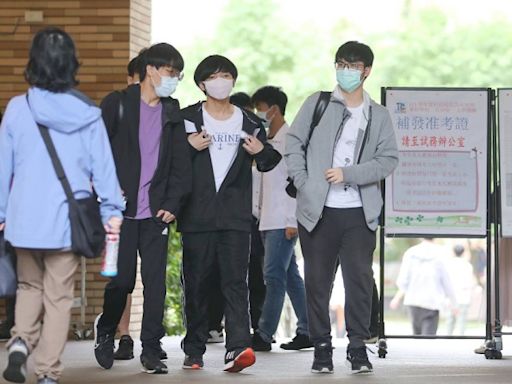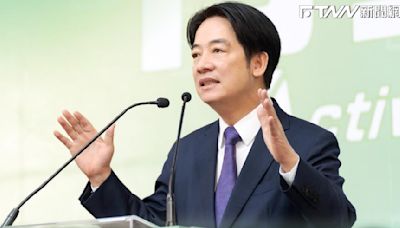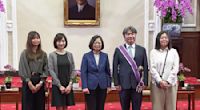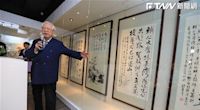搜尋結果
The uncertainty principle, also known as Heisenberg's indeterminacy principle, is a fundamental concept in quantum mechanics. It states that there is a limit to the precision with which certain pairs of physical properties, such as position and momentum, can be simultaneously known.
An intelligence quotient ( IQ) is a total score derived from a set of standardised tests or subtests designed to assess human intelligence. [1] The abbreviation "IQ" was coined by the psychologist William Stern for the German term Intelligenzquotient, his term for a scoring method for intelligence tests at University of Breslau he advocated in ...
- History
- Versions
- Interpretations
- Strengths
- Weaknesses
- Variations
- Conferences
- External Links
Philosophical background
The question of whether it is possible for machines to think has a long history, which is firmly entrenched in the distinction between dualist and materialist views of the mind. René Descartes prefigures aspects of the Turing test in his 1637 Discourse on the Methodwhen he writes: Here Descartes notes that automataare capable of responding to human interactions but argues that such automata cannot respond appropriately to things said in their presence in the way that any human can. Descartes...
Cultural background
Tests where a human judges whether a computer or an alien is intelligent were an established convention in science fiction by the 1940s, and it is likely that Turing would have been aware of these. Stanley G. Weinbaum's "A Martian Odyssey" (1934) provides an example of how nuanced such tests could be. Earlier examples of machines or automatons attempting to pass as human include the Ancient Greek myth of Pygmalion who creates a sculpture of a woman that is animated by Aphrodite, Carlo Collodi...
Alan Turing and the Imitation Game
Researchers in the United Kingdom had been exploring "machine intelligence" for up to ten years prior to the founding of the field of artificial intelligence (AI) research in 1956. It was a common topic among the members of the Ratio Club, an informal group of British cybernetics and electronicsresearchers that included Alan Turing. Turing, in particular, had been running the notion of machine intelligence since at least 1941 and one of the earliest-known mentions of "computer intelligence" w...
Saul Traiger argues that there are at least three primary versions of the Turing test, two of which are offered in "Computing Machinery and Intelligence" and one that he describes as the "Standard Interpretation". While there is some debate regarding whether the "Standard Interpretation" is that described by Turing or, instead, based on a misreadin...
Controversy has arisen over which of the alternative formulations of the test Turing intended. Sterrett argues that two distinct tests can be extracted from his 1950 paper and that, paceTuring's remark, they are not equivalent. The test that employs the party game and compares frequencies of success is referred to as the "Original Imitation Game Te...
Tractability and simplicity
The power and appeal of the Turing test derives from its simplicity. The philosophy of mind, psychology, and modern neuroscience have been unable to provide definitions of "intelligence" and "thinking" that are sufficiently precise and general to be applied to machines. Without such definitions, the central questions of the philosophy of artificial intelligencecannot be answered. The Turing test, even if imperfect, at least provides something that can actually be measured. As such, it is a pr...
Breadth of subject matter
The format of the test allows the interrogator to give the machine a wide variety of intellectual tasks. Turing wrote that "the question and answer method seems to be suitable for introducing almost any one of the fields of human endeavour that we wish to include." John Haugeland adds that "understanding the words is not enough; you have to understand the topicas well." To pass a well-designed Turing test, the machine must use natural language, reason, have knowledge and learn. The test can b...
Emphasis on emotional and aesthetic intelligence
As a Cambridge honours graduate in mathematics, Turing might have been expected to propose a test of computer intelligence requiring expert knowledge in some highly technical field, and thus anticipating a more recent approach to the subject. Instead, as already noted, the test which he described in his seminal 1950 paper requires the computer to be able to compete successfully in a common party game, and this by performing as well as the typical man in answering a series of questions so as t...
Turing did not explicitly state that the Turing test could be used as a measure of "intelligence", or any other human quality. He wanted to provide a clear and understandable alternative to the word "think", which he could then use to reply to criticisms of the possibility of "thinking machines" and to suggest ways that research might move forward....
Numerous other versions of the Turing test, including those expounded above, have been raised through the years.
Turing Colloquium
1990 marked the fortieth anniversary of the first publication of Turing's "Computing Machinery and Intelligence" paper, and saw renewed interest in the test. Two significant events occurred in that year: the first was the Turing Colloquium, which was held at the University of Sussex in April, and brought together academics and researchers from a wide variety of disciplines to discuss the Turing test in terms of its past, present, and future; the second was the formation of the annual Loebner...
2008 AISB Symposium
In parallel to the 2008 Loebner Prize held at the University of Reading,the Society for the Study of Artificial Intelligence and the Simulation of Behaviour (AISB), hosted a one-day symposium to discuss the Turing test, organised by John Barnden, Mark Bishop, Huma Shah and Kevin Warwick.The speakers included the Royal Institution's Director Baroness Susan Greenfield, Selmer Bringsjord, Turing's biographer Andrew Hodges, and consciousness scientist Owen Holland. No agreement emerged for a cano...
Turing test at CurlieZalta, Edward N. (ed.). "The Turing test". Stanford Encyclopedia of Philosophy.IQ classification. Score distribution chart for sample of 905 children tested on 1916 Stanford–Binet Test. IQ classification is the practice of categorizing human intelligence, as measured by intelligence quotient (IQ) tests, into categories such as "superior" or "average". [1] [2] [3] [4]
Differences between Shinjitai and Simplified characters in the Japanese and Chinese languages exist. List of different simplifications. The old and new forms of the Kyōiku Kanji and their Hànzì equivalents are listed below. [1] In the following lists, the characters are sorted by the radicals of the Japanese kanji.
The S-400 Triumf (Russian: C-400 Триумф – Triumf; translation: Triumph; NATO reporting name: SA-21 Growler ), previously known as the S-300 PMU-3, [4] is a mobile surface-to-air missile (SAM) system developed in the 1990s by Russia's NPO Almaz as an upgrade to the S-300 family of missiles. The S-400 was approved for service on 28 April ...
The shell of Windows 1.0 is a program known as the MS-DOS Executive. Components included Calculator, Calendar, Cardfile, Clipboard Viewer, Clock, Control Panel, Notepad, Paint, Reversi, Terminal and Write. Windows 1.0 does not allow overlapping windows. Instead, all windows are tiled.










